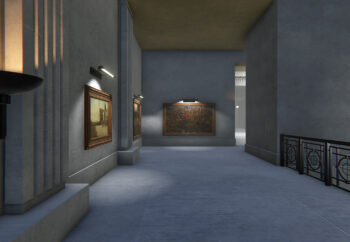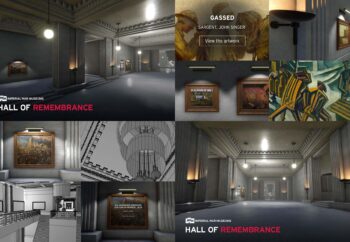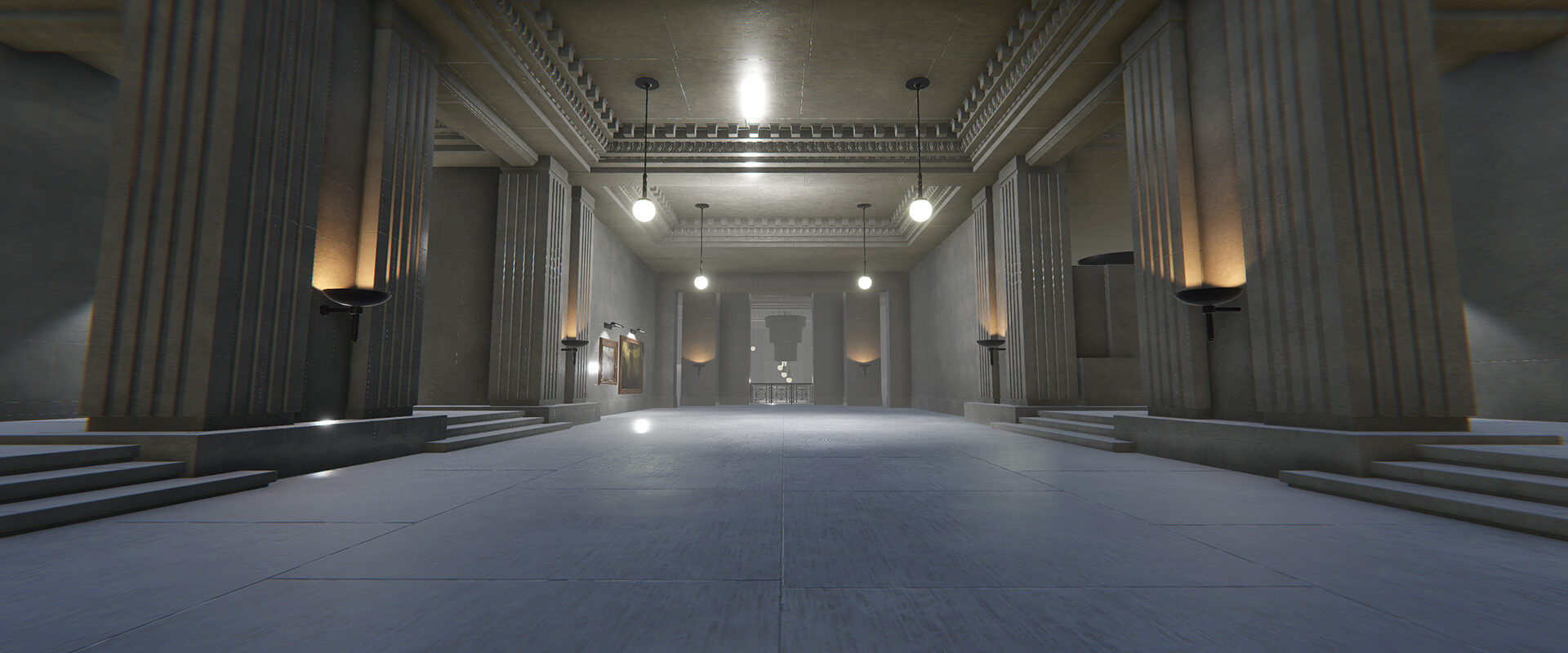Lest we forget
The Hall of Remembrance was conceived after the First World War as a gallery to honour those who served, yet it was never built. We recreated this vision digitally – a web-based 360-degree virtual platform that allows users to explore the Hall’s intended galleries and view artworks by artists like Paul Nash and Stanley Spencer, bringing this forgotten space to life.
The challenge
The original designs by Charles Holden and artworks by prominent war artists were never realised in the intended architectural setting. Our task was to interpret sketches, design examples and partial references to build an immersive, accurate digital recreation. We needed to allow people to navigate a virtual space that never existed physically, to host paintings and artworks that were commissioned but not displayed historically. Ensuring architectural style, spatial dynamics and art placement felt authentic was crucial, while making the platform accessible via the web for wide public access.

The process
Our team modelled a digital version of the Hall of Remembrance using original sketches and similar architectural works by Charles Holden as stylistic reference. We built 3D spaces in a web-based environment, creating realistic lighting, materials and navigation paths. The virtual galleries were populated with artworks that were intended for display, positioned as if the gallery existed. The platform allows users to move through the halls, click on paintings for more information, and understand the archive behind the commission. All modelling, artwork placement and web interactivity were optimised so the experience is immersive, accurate and respectful to heritage.

The outcome
The virtual Hall of Remembrance offers a poignant experience of what might have been. Users gain insight into the visual legacy of war artists whose work was meant for this space, understanding both art and architecture in context. The platform serves heritage lovers, educators and students, offering web access that needs no specialist hardware. Feedback has praised the faithful architectural recreation and the emotional power of seeing unrealised artworks in their intended setting. By bringing this gallery to digital life, we provide an educational and reflective space that honours memory, storytelling and unrealised history.

OUR PORTFOLIO
Discover how we can help
Contact us
What’s your challenge?









